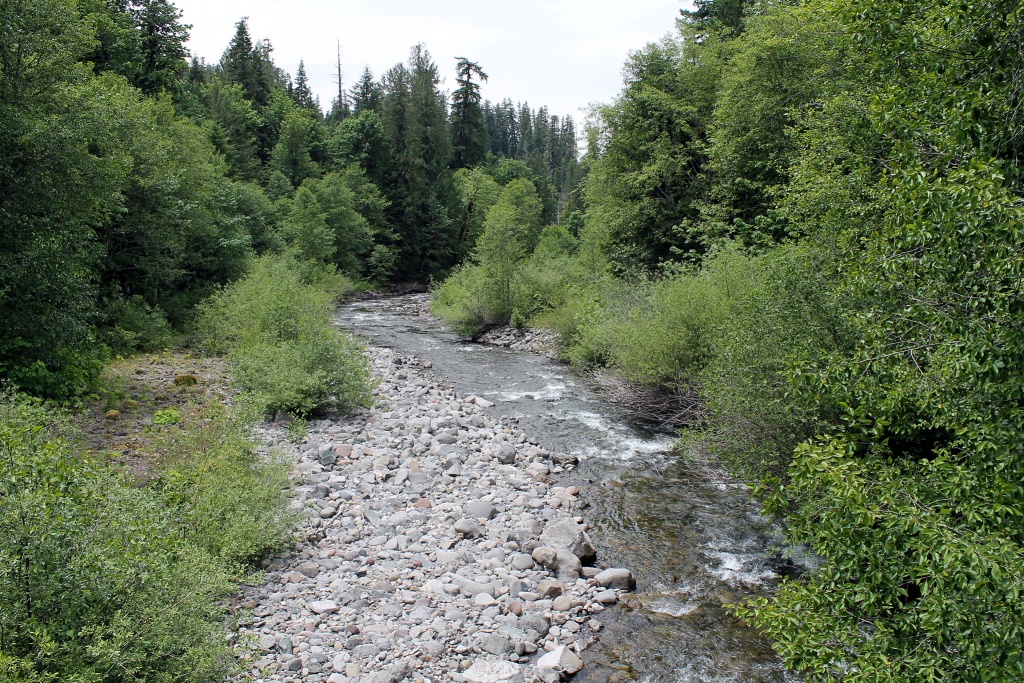 For more than seventy years, a piece of the western slope of the Cascade Range has been studied by OSU Forestry scientists, observing the life of a 16,000-acre patch of Oregon’s unique coastal ecosystem under the name H.J. Andrews Experimental Forest. The September Holiday Farm Fire had a large impact on the forest and could have marked the end of the study, but instead it will continue thanks to a $7.1 million grant from the National Science Foundation.
For more than seventy years, a piece of the western slope of the Cascade Range has been studied by OSU Forestry scientists, observing the life of a 16,000-acre patch of Oregon’s unique coastal ecosystem under the name H.J. Andrews Experimental Forest. The September Holiday Farm Fire had a large impact on the forest and could have marked the end of the study, but instead it will continue thanks to a $7.1 million grant from the National Science Foundation.
Leading the study of the forest, Michael Paul Nelson, the Ruth H. Spaniol Chair of Renewable Resources in the OSU College of Forestry, said to OSU Newsroom, “We continue to be guided by a central question: How do climate, natural disturbance and land use as influenced by values and decisions interact with biodiversity, hydrology and carbon and nutrient dynamics?”
“We’re working quickly to set up monitoring and studies to help us learn from the fire,” said Matt Betts, Professor of Landscape Ecology and the IWFL Professor of Forest Biodiversity Research in the College of Forestry. As the forest recovers, it will be possible to observe how water and air behave in the changed landscape, as well as how plant and animal life behave. They will be able to compare this with what Betts calls “decades of pre-fire data to use as the foundation for comparisons.”
Nelson places emphasis on the benefit of having “all manner of ‘ologists’” on his team, including Mark Schulze, director of the Andrews Forest; Julia Jones, professor of geography at OSU; Lina DiGregorio, LTER grant coordinator at Oregon State; Sherri Johnson, a research ecologist with Pacific Northwest Research Station and the Forest Service’s lead scientist for the Andrews Forest; and David Bell, a research forester at the PNW Research Station. Beyond that, people work on the project whose backgrounds are in social science, ethics and the arts, in order to strengthen human understanding of the forest. Nelson himself is also a scholar of environmental philosophy and ethics.
These different fields serve to answer the many questions foresters have including the influence of forests on local climate, how species interactions affect response to the microclimate, and how human values and priorities affect the use of science in land-use choices. Answers will hopefully also be addressed about the way that human land use and the period after land use affects microclimates and in turn affects human and nonhuman communities,
Study of what is now the H.J. Andrews Forest began under the U.S. Forest Service in 1948. It became a NSF “Long-Term Ecological Research” site in 1980, one of the first of what are now 28 LTERs. It is run co-operatively by OSU, the Forest Service’s Pacific Northwest Research Station, and the Willamette National Forest.
“A new experiment will look at how biotic interactions – particularly competition and facilitation – might amplify or dampen species responses to a changing climate,” Nelson said. “And work on conservation ethics will examine how values affect the ways science is brought into the equation by land managers.”
Betts is concerned by how much is unknown about how species will interact as the climate changes. “It gets even more complicated when you try to predict how these relationships will change in the forest understory, because we haven’t traditionally measured climate in these places,” he said. “One of the core experiments of the next six years will get to the bottom of how species interactions might shift in response to changes to the forest microclimate.”
Every six years, LTER funding is awarded to applicants. OSU and the Andrews Forest have now been funded for eight cycles, but that is no guarantee of continued funding.
“Long-term data allow scientists to explore variability of climate and forest dynamics, as well as the vulnerability of multiple species to changing climate over time,” Johnson said. “These studies also inform forest managers about long-term responses to forest practices, given that many taxa [taxonomic groups] have life spans much longer than the normal period of study.”
By John M. Burt
Do you have a story for The Advocate? Email editor@corvallisadvocate.com

